
|
Incidence of accidents increases when the road conditions are unfavorable (see References *1-3).
As drivers assess the configuration and conditions of the road, the presence or absence of daylight and the weather play a significant role. Here, we examine how the incidence of misjudgment accidents differs depending on day/night, and weather and road conditions, which are termed as road environment. As the combined road configuration was found to have the greatest effect on the ratio among incidence rates in the preceding investigation, the analysis below uses this factor as parameters.
|
1) By daytime and nighttime
Table 4 shows the number and incidence of misjudgment accidents by daytime and nighttime.
Although sections are colored to emphasize the tendency as in Table 2, colored sections hereafter indicate at least 2,000 accidents.
Of the misjudgment accidents that occurred in all road configurations (road configuration total in Table 4), 27,381 accidents took place during the daytime, while 12,250 occurred at night, with the rate of incidence at approximately 1% for nighttime and less than 1% for daytime. The level of daylight apparently does not affect the driver's awareness of road configuration and conditions, but this may be due to road illumination and delineators. Looking at the number of accidents by daytime and nighttime, the combined road configurations that recorded 2,000 accidents or more during daytime were left curve level and left curve downhill, in addition to straight and level roads, whereas during nighttime, only straight and level roads showed 2,000 or more accidents.
The incidence rate exceeded 10% only for left curve downhill during daytime. At night, right curve downhill and
left curve uphill also showed an incidence rate of 10% or higher. As seen, misjudgment accidents occur most often at left curve downhill, both in the daytime and at night.
|
|
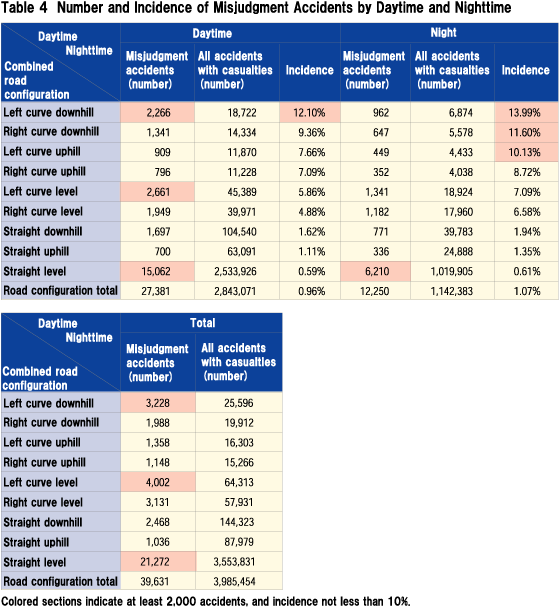
|
|
2) By weather and road condition
Analyzed next is the number and incidence of misjudgment accidents by weather and road conditions.
The results of analysis by weather are shown in Table 5 and observation by road condition in Table 6.
In all types of roads, the incidence rate of misjudgment accidents (road configuration total in Table 5), is expectedly high in snowy or foggy weather. The percentage of misjudgment accidents among all accidents with casualties registered about 10% in snowy weather and approximately 6% in fog, compared with less than 1% in fair weather. Incidence in cloudy or rainy weather was also somewhat higher than in fair weather, but the difference in the rate between cloudy and rainy was small.
By road conditions, the incidence of misjudgment accidents in all road types (road configuration total in Table 6) was about 14% on icy roads and around 12% on snow-covered roads, indicating that incidence is, respectively, about 24 and 22 times more likely to happen in such road conditions compared to dry roads, for which the incidence is less than 1% of all accidents with casualties.
By road configuration, left curve downhill registered the highest incidence in fair, cloudy, rainy and snowy weather, as well as in dry, wet, and icy road conditions.
As in all types of accidents, misjudgment accidents are more likely to occur in unfavorable road environment.
|
|
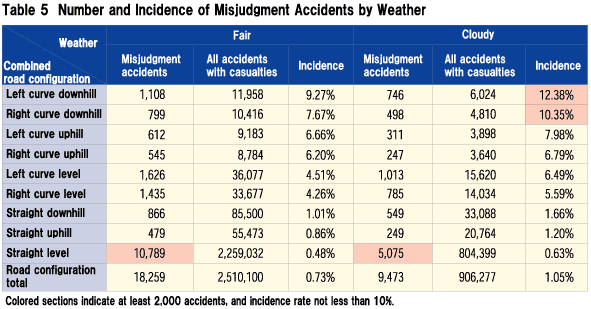
|
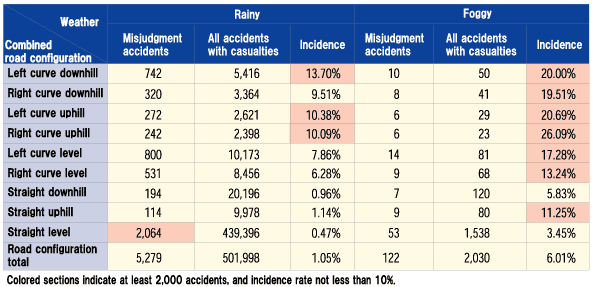
|
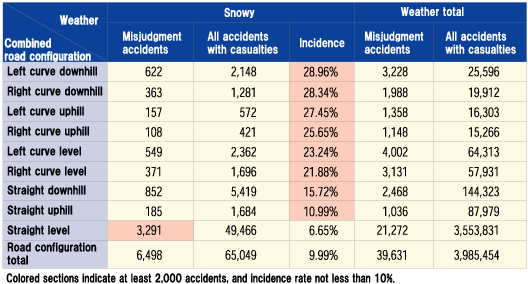
|
|
|
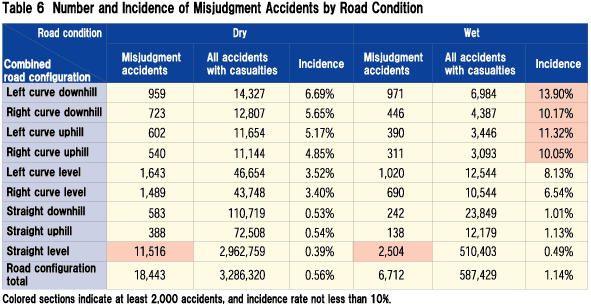
|
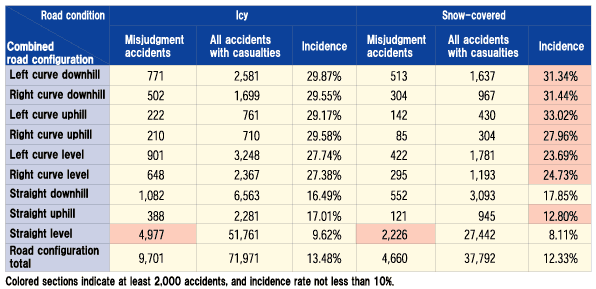
|
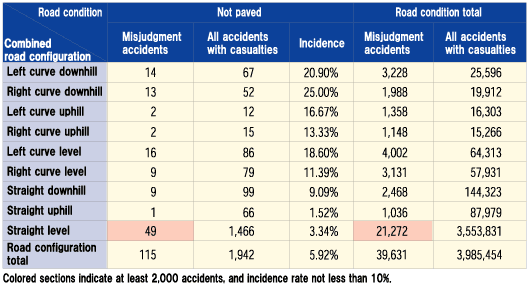
|
|
|
UP
Back Next
|
